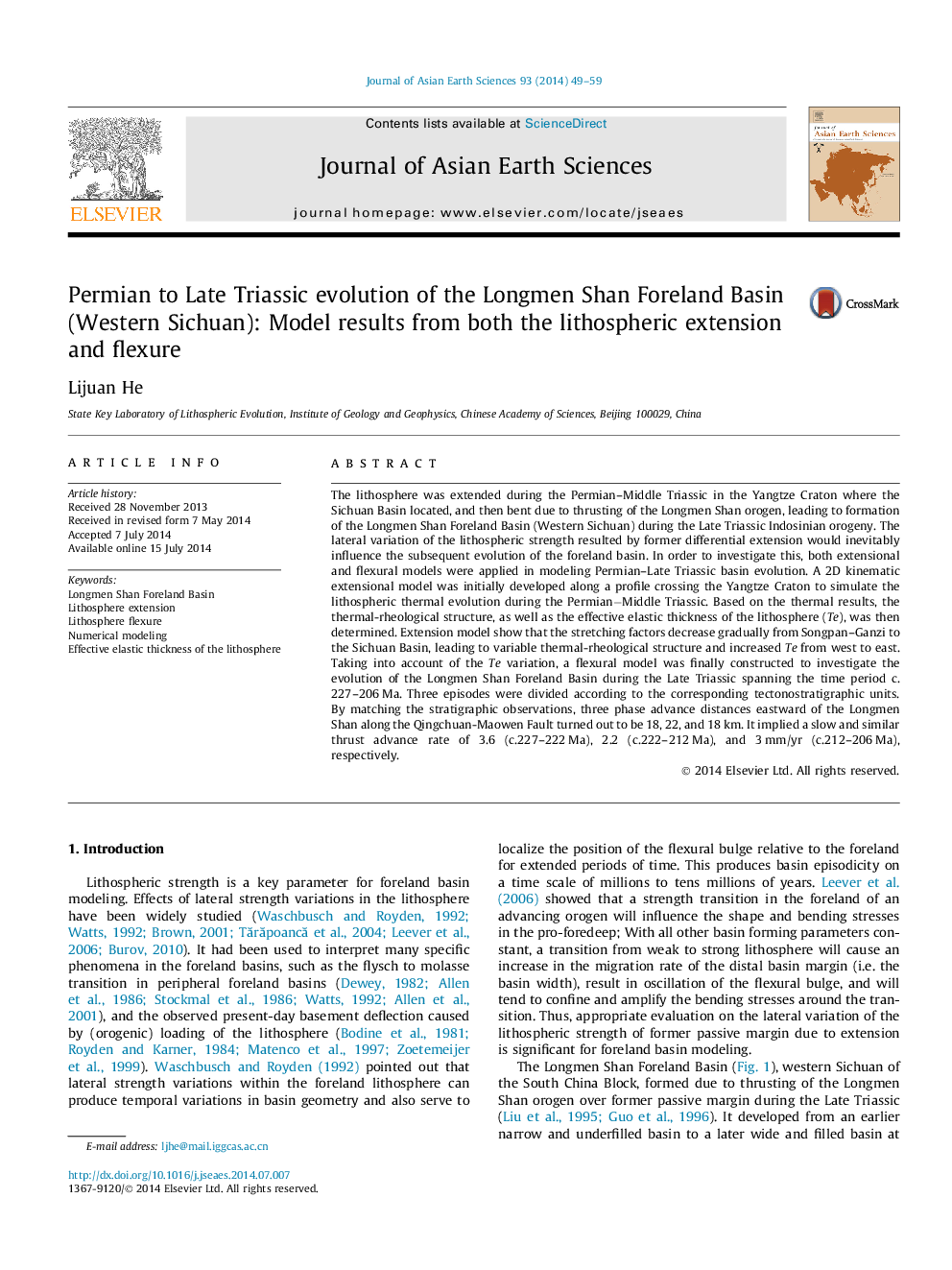| کد مقاله | کد نشریه | سال انتشار | مقاله انگلیسی | نسخه تمام متن |
|---|---|---|---|---|
| 4730720 | 1640375 | 2014 | 11 صفحه PDF | دانلود رایگان |

• Thermal modeling of the lithospheric extension in the Permian–Middle Triassic.
• Lithospheric flexure with varied strength resulted by former differential extension.
• Episodic evolution pattern of the Longmen Shan Foreland Basin in the Late Triassic.
The lithosphere was extended during the Permian–Middle Triassic in the Yangtze Craton where the Sichuan Basin located, and then bent due to thrusting of the Longmen Shan orogen, leading to formation of the Longmen Shan Foreland Basin (Western Sichuan) during the Late Triassic Indosinian orogeny. The lateral variation of the lithospheric strength resulted by former differential extension would inevitably influence the subsequent evolution of the foreland basin. In order to investigate this, both extensional and flexural models were applied in modeling Permian–Late Triassic basin evolution. A 2D kinematic extensional model was initially developed along a profile crossing the Yangtze Craton to simulate the lithospheric thermal evolution during the Permian−Middle Triassic. Based on the thermal results, the thermal-rheological structure, as well as the effective elastic thickness of the lithosphere (Te), was then determined. Extension model show that the stretching factors decrease gradually from Songpan–Ganzi to the Sichuan Basin, leading to variable thermal-rheological structure and increased Te from west to east. Taking into account of the Te variation, a flexural model was finally constructed to investigate the evolution of the Longmen Shan Foreland Basin during the Late Triassic spanning the time period c. 227–206 Ma. Three episodes were divided according to the corresponding tectonostratigraphic units. By matching the stratigraphic observations, three phase advance distances eastward of the Longmen Shan along the Qingchuan-Maowen Fault turned out to be 18, 22, and 18 km. It implied a slow and similar thrust advance rate of 3.6 (c.227–222 Ma), 2.2 (c.222–212 Ma), and 3 mm/yr (c.212–206 Ma), respectively.
Journal: Journal of Asian Earth Sciences - Volume 93, 15 October 2014, Pages 49–59